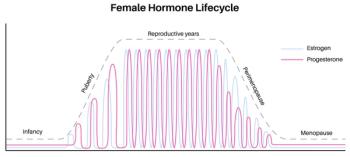
FDA Approves Intranasal DHE (Trudhesa) for Acute Migraine Treatment
The DHE nasal spray delivered pain relief at 2 hours for 66% of patients; 93% of those remained pain-free at 24 hours and 86% at 2 days post-dose.
The US Food and Drug Administration (FDA) has approved Trudhesa (dihydroergotamine mesylate) nasal spray for the acute treatment of migraine with or without aura in adults.
The well-established migraine therapeutic is delivered in a dose of 0.725 mg to the vascular rich upper nasal space via proprietary technology developed by Impel NeuroPharma who announced the approval by
FDA’s approval was based on STOP 301, a phase 3, open label pivotal safety study during which more than 5650 migraine headaches were treated over a 24- or 52-week period. Trudhesa was well tolerated and exploratory efficacy analysis found it provided rapid, sustained, and consistent relief of migraine symptoms. Importantly, the agent provided consistent efficacy even when taken as late as 2 hours into a migraine attack, a benefit often not seen with some oral acute treatments that are most effective when taken within one hour of headache onset, according to the press statement.
STOP 301 evaluated the safety and tolerability of Trudhesa in 354 adults aged 18 to 65 years who had a documented diagnosis of migraine (by International Classification of Headache Disorders 3β criteria) with or without aura, including at least 2 attacks per month (maximum 14 headache days/month) for the previous 6 months. Average age of participants was 41 years; the majority were women (86%); 31% reported migraine with aura. Mean number of migraine headaches during screening was 4.6 and maximum severity of pain was severe for 65.3% of attacks, according to the study which was published in the journal Headache.
The full safety set (n=354) was comprised of patients who received at least 1 dose of Trudhesa per 28-day period during the 24-week treatment period and the primary safety set (n=185) of those who took at least 2 doses during that period. Primary safety endpoints of concern included serious and non-serious treatment emergent adverse events and also changes in nasal mucosa and olfactory function.
STOP 301 achieved the primary endpoints and investigators observed no new safety signals. Their analysis of exploratory efficacy data in the full safety set showed that after the first dose, 66.3% of patients achieved pain relief, 38% of patients had pain freedom, and 52% had freedom from their most bothersome migraine symptom at 2 hours, according to the press statement. Approximately 16% reported pain relief within 15 minutes. Moreover, among patients who reported being pain free at 2 hours post-treatment, 93% remained pain free at 24 hours, and 86% remained pain free through day 2.
Some of the most frequently reported adverse events related to the nasal spray during the study were nasal congestion, nausea, nasal discomfort, abnormal olfactory test results, and vomiting, according to the published study.
“Migraine is a disease that impacts the whole body and is the second leading cause of disability,” said Kevin Lenaburg, executive director, Coalition for Headache and Migraine Patients, in the statement. “We welcome an important new treatment that combines the long-established efficacy of DHE with a non-oral, innovative delivery system that allows patients to self-administer wherever they are and at any point within a migraine attack.”
Trudhesa is expected to be available in early October 2021.
Reference: Smith TR, Winner P, Aurora SK, et al.
Trudhesa.
Newsletter
Enhance your clinical practice with the Patient Care newsletter, offering the latest evidence-based guidelines, diagnostic insights, and treatment strategies for primary care physicians.

























































































































































































































































































